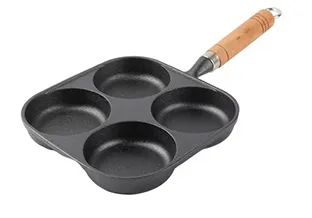
campfire cooking with cast iron dutch oven
Campfire Cooking with a Cast Iron Dutch Oven
Cooking over an open fire has a timeless allure that evokes a sense of adventure and connection to nature. One of the most versatile and rugged tools for this sort of culinary endeavor is the cast iron Dutch oven. Renowned for its ability to evenly distribute heat, retain warmth, and cook a variety of dishes, a Dutch oven is an essential companion for any outdoor enthusiast. Whether you’re a seasoned camper or just venturing into the great outdoors, here’s a guide to making the most of your campfire cooking experience with a cast iron Dutch oven.
Choosing Your Dutch Oven
When selecting a Dutch oven for camping, look for one that is sturdy and made of high-quality cast iron. Sizes vary, but a 5- to 7-quart model is ideal for preparing meals for a family or a small group. Consider a Dutch oven with legs on the bottom; these allow you to place the pot directly over hot coals while ensuring stability. Additionally, a well-fitted lid is crucial for retaining heat and moisture during cooking.
Preparing the Fire
To get started, you’ll need to build a proper campfire. A wood fire is best, as it provides a steady source of heat. Begin by constructing a fire pit using stones, or simply use a designated fire ring if one is available at your campsite. Allow the fire to burn down until you have a nice bed of hot coals, which will provide even heat for your cooking. You can adjust the intensity of the heat by adding or removing coals as needed.
Cooking Techniques
One of the great advantages of a cast iron Dutch oven is its cooking flexibility
. Here are some methods you can applycampfire cooking with cast iron dutch oven

1. Baking You can create a fantastic campfire pizza, bread, or even cobbler using your Dutch oven. For baking, place hot coals on the lid of the oven as well as underneath it. This allows for even cooking from both the bottom and top. A heat source of around 350°F can usually be achieved with 10-12 coals underneath and an equal number on top.
2. Stewing and Soups Dutch ovens are perfect for simmering soups, stews, and hearty chilis. Simply brown your meat (if using) directly in the pot, add your vegetables, liquid, and spices, then cover with the lid and let it cook slowly. The heavy lid traps moisture, resulting in rich and flavorful dishes.
3. Roasting You can roast meats and vegetables by placing them in the Dutch oven with some oil and seasoning, ensuring they are evenly coated. Add coals beneath the pot for a straightforward roasting process, turning occasionally for even cooking.
4. Frying Use your Dutch oven for frying over the fire to make dishes like fried chicken or donuts. Add oil and heat it up until it reaches the desired temperature. Be cautious with hot oil and ensure safety measures are in place to avoid spills and burns.
Cleaning and Caring for Your Dutch Oven
After you’ve enjoyed your meal, proper post-cooking care is essential to maintain the longevity of your cast iron Dutch oven. Allow it to cool down naturally before washing it with hot water and a non-abrasive scrubber. Avoid using soap, as it can strip the seasoned surface. Once clean, dry the pot thoroughly and apply a thin layer of cooking oil to prevent rust.
The Joy of Campfire Cooking
Cooking with a cast iron Dutch oven at the campsite is not just about the food. It’s an experience that fosters togetherness, respect for nature, and the joy of rustic living. As you gather around the glowing embers, share stories, laughter, and delicious meals, you create memories that last a lifetime. So, pack your Dutch oven the next time you head into the wild and embrace the culinary possibilities that await you under the stars. Happy camping!
-
Premium Cast Iron Large Griddle | Durable & Even HeatingNewsAug.03,2025
-
Large Cast Iron Griddle Pan-Baixiang County Zhongda Machinery|Non-Stick&Heat RetentionNewsAug.03,2025
-
Cast Iron Cookware Pan- Baixiang County Zhongda Machinery|Non-stick, DurableNewsAug.03,2025
-
Black Cast Iron Pan- ZD Cookware|Non-Stick, Heat ResistantNewsAug.03,2025
-
Cast Iron Cookware Pancake Pan- ZD Cookware|Non-Stick, Even Heat, DurableNewsAug.02,2025
-
Cast Iron Cookware- Baixiang County Zhongda Machinery|Non-Stick, Heat RetentionNewsAug.02,2025


